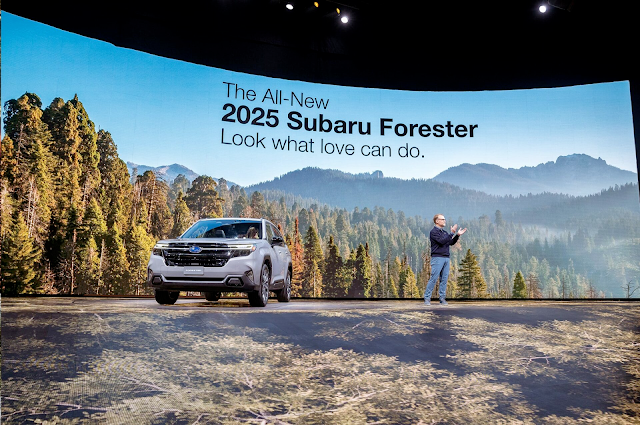The 2025 Subaru Forester, set to arrive in 2024, represents the latest iteration of Subaru's compact SUV lineup. While it introduces a range of updates and features, it appears to tread a familiar path, sticking closely to the brand's established formula of practicality and reliability.
The new Forester maintains Subaru's standard Symmetrical All-Wheel Drive and offers 8.7 inches of ground clearance, consistent with its predecessors and reinforcing its capability in varied weather conditions. The upgraded standard EyeSight® Driver Assist Technology is a notable addition, though it aligns with the industry's broader trend towards enhanced safety features.
Inside, the Forester adopts the increasingly common wireless Apple CarPlay® and Android Auto™ integration, alongside an 11.6-inch high-resolution touchscreen and wireless device charging. These updates, while useful, follow the industry's general shift towards more connected and tech-heavy interiors rather than setting new standards.
The introduction of a foot-activated, hands-free Power Rear Gate adds a touch of convenience to the vehicle's functionality. However, with up to 74.4 cubic feet of cargo space, the Forester's capacity remains within the expected range for compact SUVs, offering no significant breakthroughs in this area.
Design-wise, the 2025 Forester features a new grille, updated headlight styling, and geometric trim accents. The design updates, while fresh, don't particularly set the Forester apart in a segment that's seeing increasingly bold designs from competitors. The introduction of 19-inch alloy wheels, a first for the Forester, adds a slight edge to its appearance but is a relatively modest upgrade in the context of the wider market.
The available panoramic moonroof and standard roof rails are practical features, though they don't differentiate the Forester significantly from other offerings in the segment. The Sport and Touring models come with stylistic variations, like low-profile roof rails and different wheel finishes, which add some customization options but are largely aesthetic.
The Forester Touring and Sport trims offer variations in comfort and style, with the former focusing on luxury elements and the latter on a sportier look. Features like heated seats, premium audio systems, and water-repellent upholstery are in line with what's expected in higher trims of modern compact SUVs.
In conclusion, the 2025 Subaru Forester seems to stick to a safe and familiar formula, offering a reliable and practical compact SUV experience with some technological and design updates. While these changes are likely to be welcomed by Subaru enthusiasts and those seeking a dependable compact SUV, the Forester may not stand out significantly in a competitive and rapidly evolving market.




